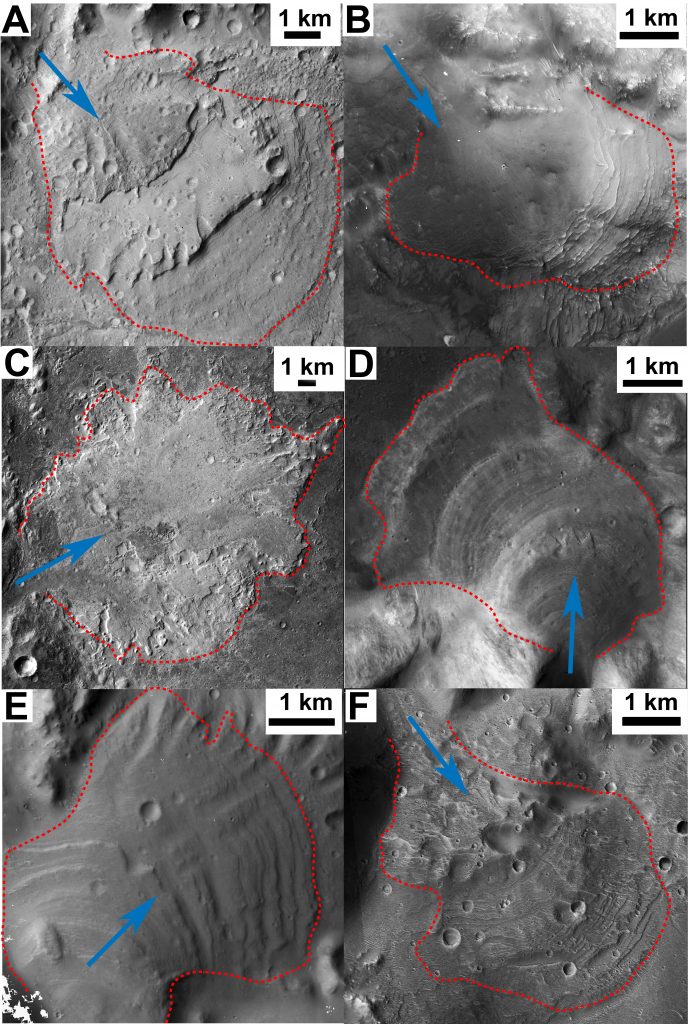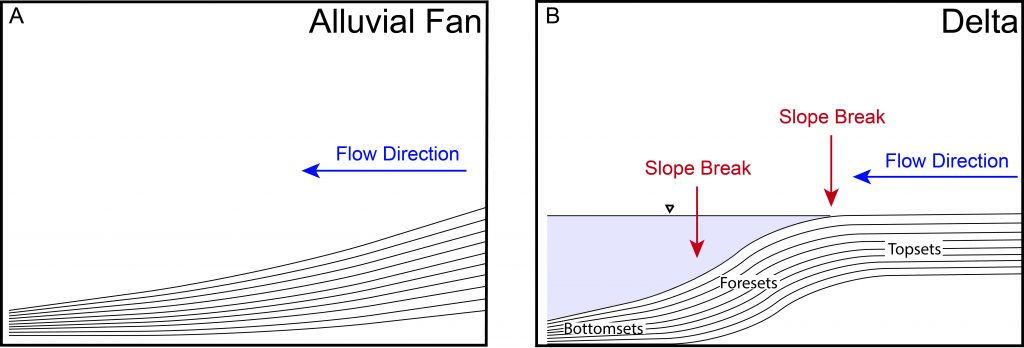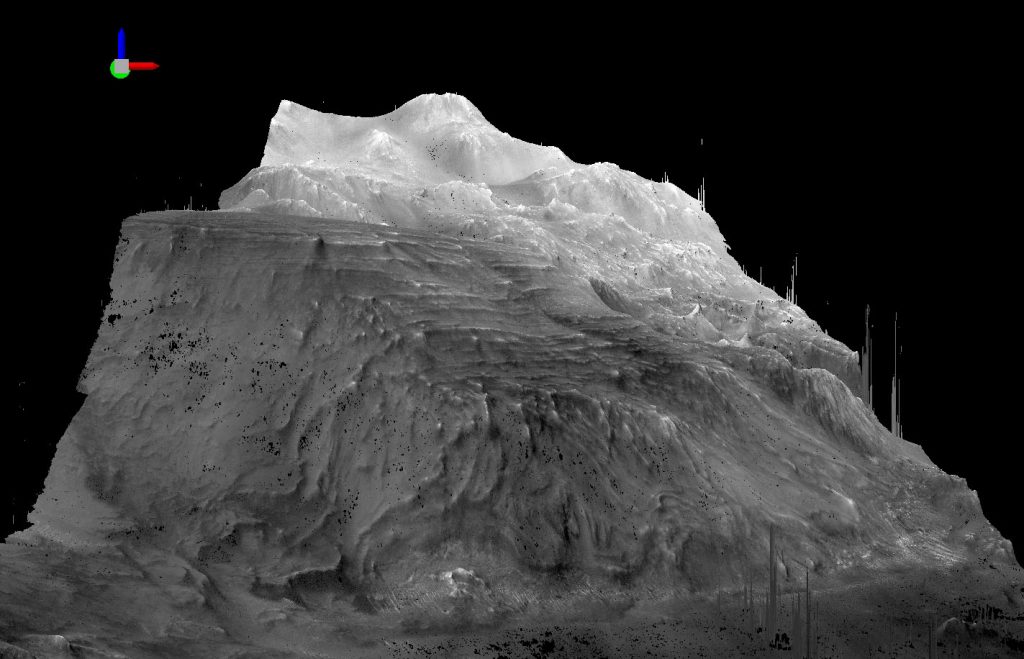December 2, 2021
As a third year PhD student in the Planetary Surface Processes group at the Jackson School, I recently published a paper on my graduate school research analyzing stratigraphy on Mars.
In my research, I use sedimentary deposits to study the ancient fluvial history of Mars. The currently cold and dry planet once had liquid water flowing across the surface about 3.8 billion years ago. Although we know there was water on the surface, it is uncertain where exactly it was and how long it was around. These are important things to know when considering the possibility of life on the surface of ancient Mars!
To help answer these questions, I look at sedimentary fan features across the surface of Mars. Fan features form when rivers flow into a large basin (like a crater), depositing sediment in a radial fashion.

Fan features can be one of two end members: alluvial fans or deltas. If the river opens into a relatively dry and empty basin, sediment will pile up into an alluvial fan. However, if a lake or ocean occupies the basin, the sediment forms a delta (think of the Mississippi River emptying into the Gulf of Mexico!). Previous work on martian fans has focused on the present-day geomorphic shape of fan features. However, many of the features are billions of years old and have experienced significant erosion. By looking at the stratigraphy of the ancient and eroded fans on Mars, I look for one characteristic unique to deltas, eroded or not: a slope break. If I see any stratigraphic trends that show a deltaic clinoform shape (a slope break where shallow layers transition to steep then back to shallow slope), that indicates there was once a standing body of water in the basin.

Of the 15 fans I analyzed, 11 showed no evidence of subaqueous deposition (no slope break = can’t be confirmed as a delta). Of the four possible deltas, Fan #5 in Hargraves crater showed the most stratigraphic evidence of an ancient lake! This fan is particularly interesting because it is perched high on the crater wall (~800 m above the crater floor) meaning the ancient lake was at least as deep, which translates to a minimum estimated lake volume of ~400 km³. The fan in Hargraves crater is also my favorite because it neighbors Jezero Crater, which also hosts a delta and is where the Mars 2020 rover landed this year. The delta in Hargraves is younger than the one in Jezero, meaning there was repeated lake activity in the region. I think it would be incredibly interesting to see if there’s any evidence of late-stage fluvial activity in Jezero crater, postdating the delta present there, that would support a more regional (rather than local) event being responsible for the lake within Hargraves crater.
